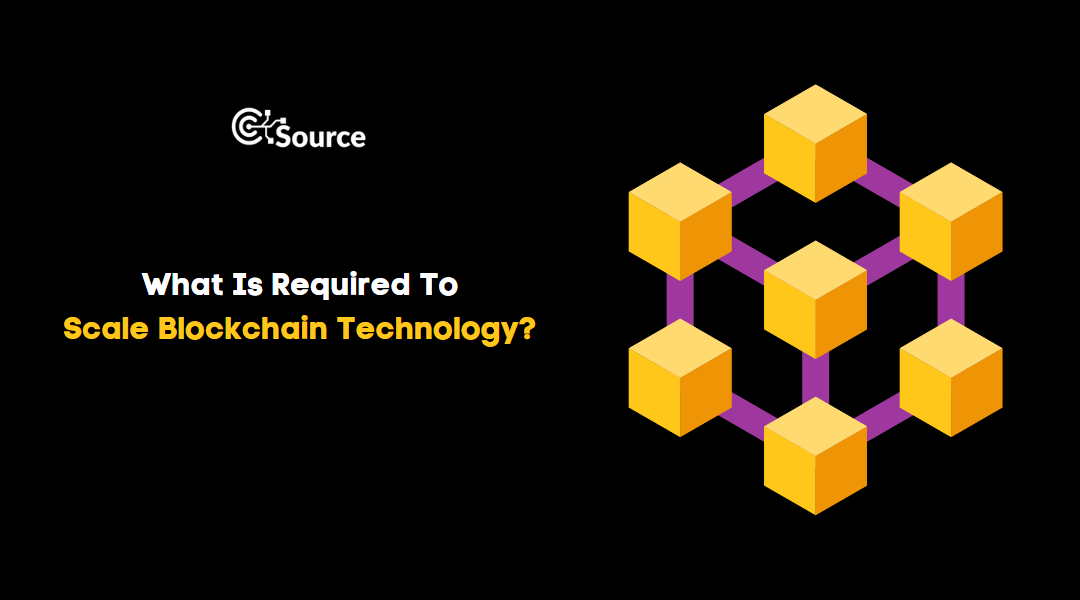Blockchain technology has come a long way since its inception in 2008, with the launch of Bitcoin. It has evolved from being just a technology used for cryptocurrency transactions to becoming a vital tool in many industries. With its decentralized, secure, and transparent nature, blockchain technology has the potential to revolutionize the way we conduct transactions, verify identities, and store data. However, for blockchain technology to reach its full potential, it needs to be scaled.
Scaling blockchain technology means increasing its capacity to handle more transactions, improve its performance, and make it more accessible to a wider range of users. In this article, we will discuss what is required to scale blockchain technology and explore the challenges and solutions that are being proposed.
What are the challenges in scaling blockchain technology?
One of the significant challenges in scaling blockchain technology is its inherent design. Blockchain technology is based on a decentralized architecture, which means that every node in the network has to verify and validate every transaction. As the number of transactions increases, so does the computational power required to process them. This results in slower transaction times and higher transaction fees.
Another challenge is the size of the blockchain. As more transactions are added to the blockchain, its size increases, making it more difficult and time-consuming to store and process. The larger the blockchain, the longer it takes for nodes to download and verify the entire blockchain, which slows down the network.
Finally, there is the issue of security. Blockchain technology is secure because it uses cryptography to verify and authenticate transactions. However, as the blockchain grows larger, it becomes more challenging to maintain the security of the network. Hackers and bad actors can exploit vulnerabilities in the network to steal or corrupt data, making it essential to ensure the security of the blockchain.
What is required to scale blockchain technology?
There are several solutions proposed to scale blockchain technology, and each of them addresses different aspects of the scaling problem. Some of the common solutions are:
Increase block size and reduce block time
One way to increase the transaction capacity of the blockchain is to increase the block size and reduce the block time. By doing so, more transactions can be processed in a shorter amount of time, which improves the overall performance of the network. However, this solution can also result in a larger blockchain, which can make it more challenging to store and process.
Off-chain transactions
Off-chain transactions involve moving transactions off the blockchain to a secondary network. This solution reduces the load on the main blockchain, which can help increase the transaction capacity. Off-chain transactions can be conducted through payment channels, such as the Lightning Network for Bitcoin, or through sidechains, which are separate blockchains that are connected to the main blockchain.
Sharding
Sharding is a technique that involves splitting the blockchain into smaller parts, or shards, which can process transactions independently. Each shard can have its own set of nodes, which reduces the computational load on each node and improves the overall performance of the network. Sharding can also help reduce the size of the blockchain, making it easier and faster to store and process.
Proof of Stake
Proof of Stake (PoS) is a consensus mechanism that replaces the energy-intensive Proof of Work (PoW) mechanism used in Bitcoin. PoS works by having users stake their cryptocurrency as collateral to become validators of the network. Validators are chosen based on the amount of cryptocurrency they have staked, and they are responsible for validating transactions and creating new blocks. PoS is more energy efficient than PoW and can help increase the transaction capacity of the blockchain.
Interoperability
Interoperability refers to the ability of different blockchains to communicate with each other. By enabling different blockchains to exchange data and value, interoperability can help increase the transaction capacity of the network. Interoperability can be achieved through technologies such as atomic swaps, which allow for the exchange of one cryptocurrency for another without the need for a centralized exchange, or through the use of blockchain bridges, which connect different blockchains together.
Layer 2 solutions
Layer 2 solutions are built on top of the blockchain and provide additional functionality, such as smart contracts and decentralized applications (dApps). Layer 2 solutions can help increase the transaction capacity of the blockchain by moving complex transactions off the main blockchain and onto a secondary network. Examples of Layer 2 solutions include Plasma, which is a scaling solution for Ethereum, and state channels, which enable off-chain transactions between two parties.
Governance
Finally, governance plays a critical role in scaling blockchain technology. Governance refers to the rules and processes that govern the blockchain network, including the decision-making process for making changes to the network. A well-designed governance system can help ensure that the network is scalable, secure, and able to adapt to changes in the market and technology.
Conclusion
Blockchain technology has the potential to transform many industries by providing a secure, decentralized, and transparent way to conduct transactions and store data. However, to reach its full potential, blockchain technology needs to be scaled. There are several solutions proposed to scale blockchain technology, including increasing block size, off-chain transactions, sharding, proof of stake, interoperability, layer 2 solutions, and governance. Each of these solutions addresses different aspects of the scaling problem and can help improve the performance, capacity, and security of the blockchain network. As blockchain technology continues to evolve, it is essential to keep in mind the challenges of scaling and to continue to explore new solutions to address them.

